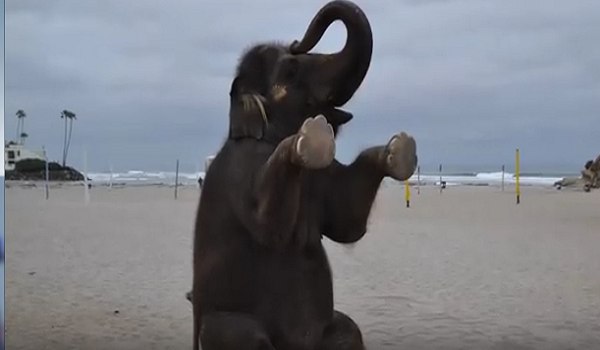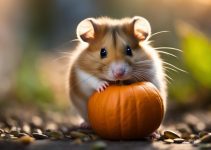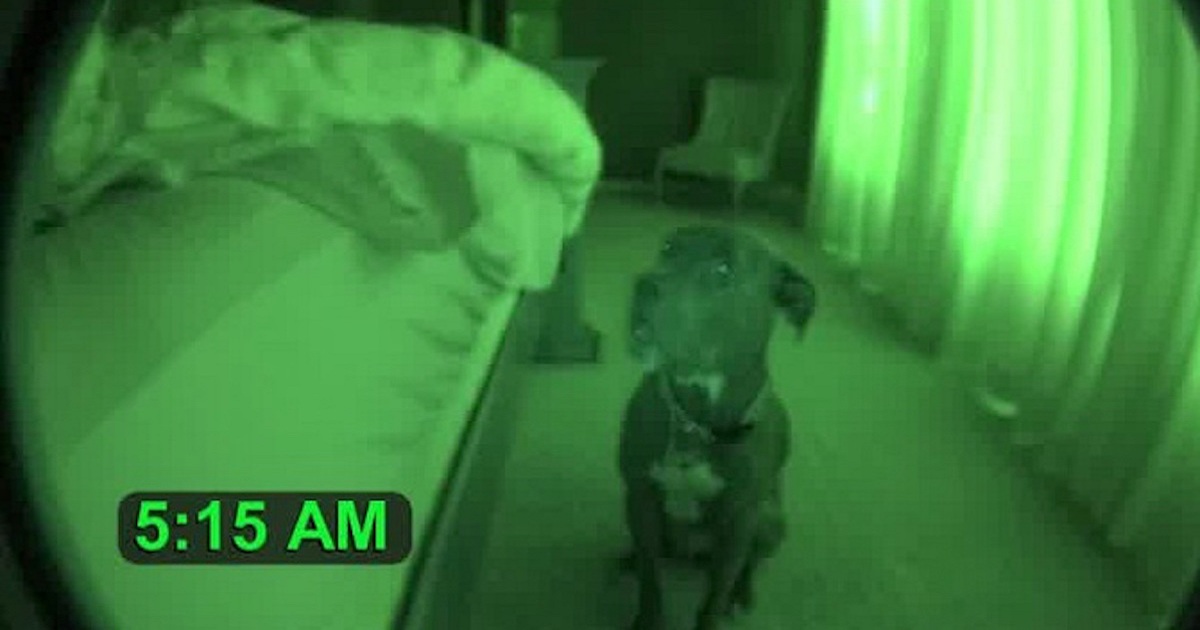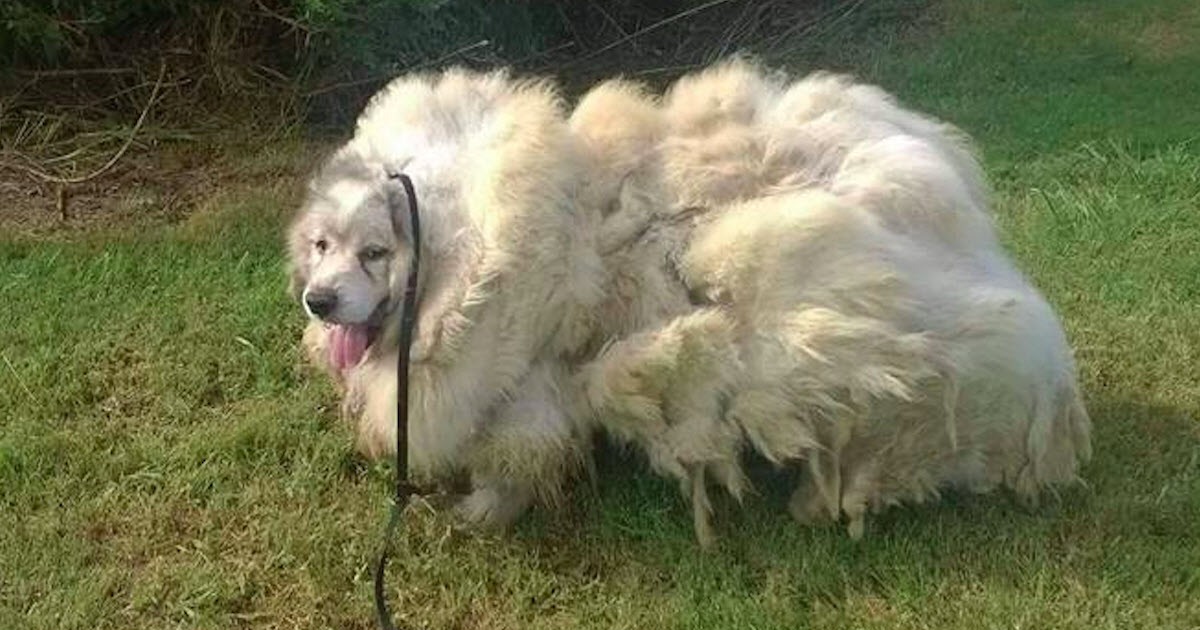Have you ever caught a glimpse of a parrot grooving to the rhythm of a catchy tune and wondered, why do parrots dance? It’s a question that has charmed bird enthusiasts and scientists alike. I remember the first time I saw a parrot unleashing some spontaneous, remarkably coordinated bird dance moves, and it got me thinking about the incredible world of parrot dancing behavior.
As it turns out, I’m not alone in my curiosity. Researchers like Adena Schachner from Harvard University took the concept of dancing birds from a delightful peculiarity to a subject worthy of rigorous study. The revelations of their research have sparked a fascinating discussion on cognition and mimicry in our feathered friends, giving us insights that stretch beyond just an amusing display to the inner workings of animal behaviors.
The Fascinating Phenomenon of Parrot Dancing Behavior
As a journalist with a deep affection for avian wonders, I’ve been astounded at the rhythmic prowess that parrots showcase when they groove to tunes. It’s a spectacle of nature that compels us not just to watch and enjoy, but also to ponder — why do these feathered maestros dance? To understand parrot behavior and dancing, one must observe how meticulously their motions complement the beats and rhythms of music.
Going beyond the anecdotal, my interest led me to explore the rich tapestry of parrot dance moves, not just in person, but through the lens of the vast digital world. Specifically, I’ve pored over parrot dance videos on YouTube, which form a treasure trove of evidence substantiating the bond between parrots and music.
Diving Into the Rhythm: How Parrots Align with Music
The alignment of parrot movement to music isn’t mere coincidence. Those rhythmic bops you see a parrot performing—be it a nod or a full-bodied shake—are not just adorable mimicry but suggest a more profound connection with the auditory stimuli they’re exposed to. And it’s in this eloquent dance that we find hints to a question that fascinates ornithologists and music lovers alike: why do birds dance?
From YouTube to Scientific Research: Analyzing Parrot Dance Videos
Not all uploaded clips of purported dancing birds can be taken at face value — the genuine instances of parrots grooving are distinct from videos where music is retrofitted. In my pursuit, I targeted authentic recordings showcasing unmistakable instances where parrots kept rhythm with beats in a natural manner.
Extrapolating from a wide array of home-recorded footage, it turns out that only parrot species with vocal mimicry displayed strong evidence of truly dancing to music beats. It’s a revelation that adds another layer of amazement to parrot dance behavior, suggesting that their ability to mimic sounds may be integrally connected to these delightful dance moves.
Exploring the Evolutionary Link: Vocal Mimicry and Dance Moves
As I delve into the world of parrot behavior and communication, it’s impossible not to be captivated by their fascinating ability to move to a rhythm. Why do parrots dance? My interest peaks, especially when considering the psychological and evolutionary facets possibly at play, linking vocal mimicry and dance. Renowned research by scholars like Schachner spotlights that parrots, and only a select few other species, demonstrate the unique capability to synchronize their movements with music—an attribute stemming from their prowess in vocal imitation.
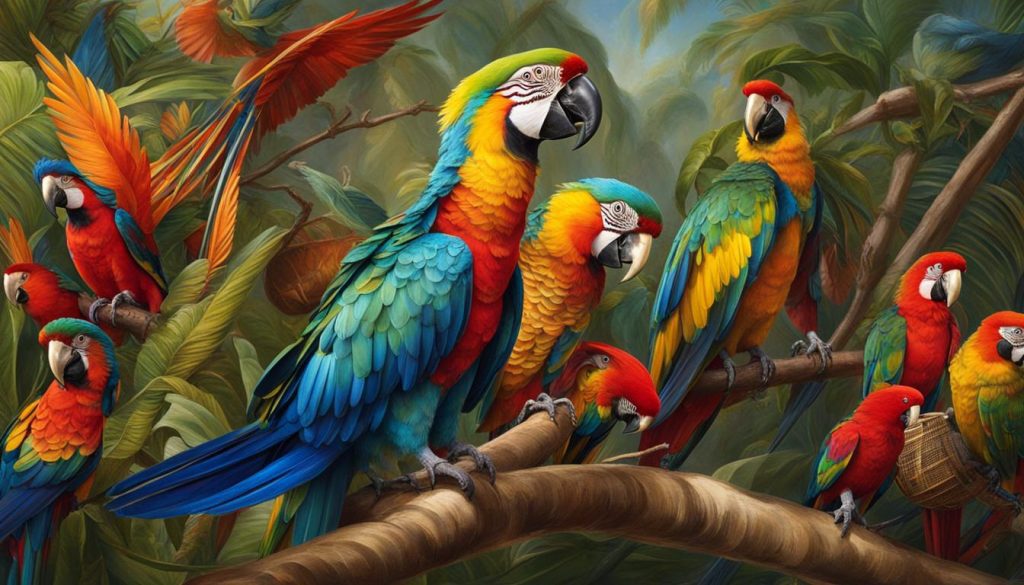
The intrigue deepens when hypothesizing that the neurological frameworks honed for vocal mimicry may pave the way for these birds to dance in time with musical beats. This implies a potential connection between the cognitive processes embedded in sound imitation and the percussive rhythm of dancing. Delving into this further, it’s not merely that parrots are copying what they hear; there is a complex, intertwined system allowing for parrot communication through varied nuances of sound and movement that is both intricate and intuitive.
As I reflect on these insights, they unravel the remarkable tapestry of parrot behavior and highlight the interplay between their auditory experiences and physical expressions. As someone who’s endlessly curious about the rich tapestry of animal behavior, these dances aren’t just a source of entertainment; they represent a window into a deeper understanding of these vibrant creatures—who share with us an astonishing ability to feel and move to a beat, enriching both their world and ours.
Why Do Parrots Dance? Uncovering the Connections Between Sound and Movement
As someone deeply fascinated by the rhythmic movements of parrots, I’ve often pondered over the enigma behind their ability to dance. What’s striking is not just the sheer joy these birds exude when they bob and weave to a beat, but the complex interplay between their vocal abilities and physical expressions. It has led me to delve deeper into the cognitive processes that underpin parrot dance training and to appreciate the vital role the auditory experiences play in their behavior and enrichment.
The Role of Vocal Learning in Parrot Dance
Vocal learning isn’t just about mimicking sounds; it’s a sophisticated cognitive function that seems to be intricately linked with a parrot’s ability to engage in dance. The key to understanding this lies in how these intelligent creatures interpret and keep time with music. Remarkable studies have discovered that parrot dancing training not only stimulates a parrot’s auditory senses but also encourages their natural propensity for vocal variation—forming a foundation for complex movements that we perceive as dance.
Parrots in the Lab and in Nature: The Studies of Schachner and Team
My exploration into parrot behavior and dancing has been heavily influenced by Schachner’s groundbreaking research. By observing parrots both in controlled lab environments and their natural habitats, we’ve begun to unlock the secrets to their dance abilities. These observations clearly show that while some parrots may have an inherent capacity to move rhythmically, parrot dance training can significantly enhance this skill, providing not just physical exertion but also crucial mental stimulation that contributes to their overall enrichment.
Through my lens, every fluff of feather during a dance routine symbolizes a leap in our understanding of parrot enrichment. It’s the synthesis of vocal mastery and the physical performance that turns mere movement into a captivating dance, and this is what I aim to convey—the marvel of parrot dancing.
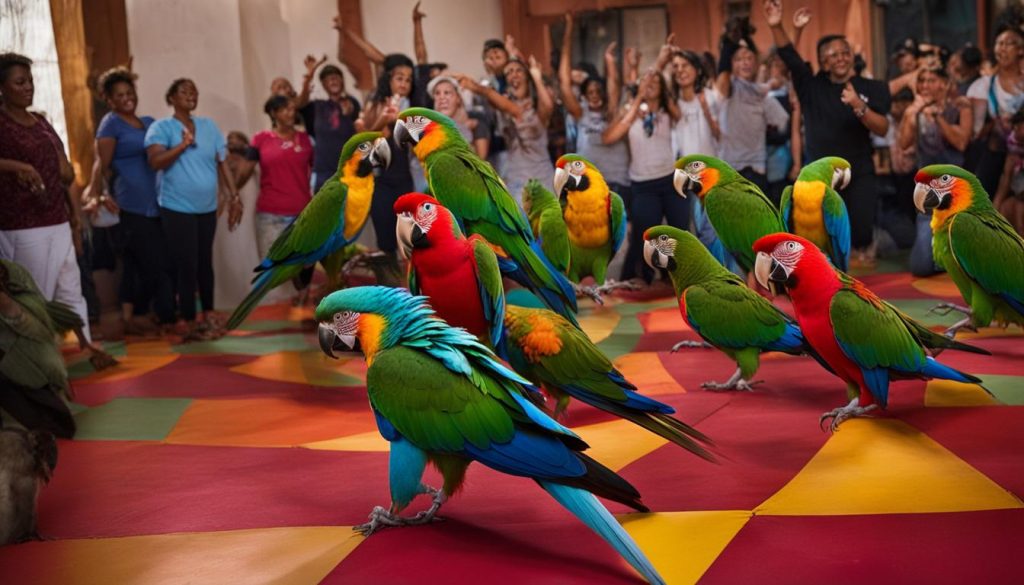
Reasons Parrots Dance: From Social Interactions to Neurological Benefits
As I delve into the myriad of reasons parrots dance, it’s evident that these birds carry a rhythm in their hearts that goes beyond a mere response to music. The fact they don’t naturally synchronize to sounds in the wild as some species do intrigue me further. Could it be that their capacity to move to the beat is, in essence, an evolutionary byproduct deeply rooted in their ability to mimic sounds? This seems increasingly probable.
Understanding parrot behavior reveals that their dancing might stem from a desire for social interaction. Parrots are known to be highly sociable creatures, and dancing could serve as a medium for communication within their flock or with their human caretakers. From my observations, I notice that their movement speaks an intricate language of engagement and perhaps even joy.
Moreover, the neurological benefits suggested by the concept of parrot dance therapy cannot be overlooked. Just as humans gain emotional release and cognitive stimulation from dancing, parrots could experience similar benefits. It’s a therapeutic realm that I find quite promising for these intelligent animals. Research suggests this form of therapy could support their mental well-being in captivity, offering a delightful yet meaningful enrichment activity.
And let’s not forget the popularity of parrot dancing videos. These clips do more than entertain; they speak volumes about parrot communication modes. Every head bob and tail feather shake has the potential to inspire questions about their emotive states and social complexities.
I can’t help but feel mesmerized by these feathered performers, who remind me that there’s always more to learn about the reasons parrots dance. Their behavior reflects a tapestry of evolutionary, neurological, and social elements that I find incredibly enriching to explore.
Parrot Enrichment: The Impact of Music and Dance Therapy on Avian Welfare
As someone who has spent years observing and engaging with parrot behavior, the transformative role of music and dance therapy in enhancing avian welfare truly captivates me. Through my experiences, I’ve noticed how the rhythmic swaying and foot-tapping that parrots display isn’t just for entertainment—these behaviors are indicative of a deeper mental and emotional stimulation. It makes me reflect on the way we perceive parrot enrichment and the innovative methods that can significantly improve their lives in captivity.
Mental and Emotional Benefits of Dance for Parrots
The mental and emotional benefits of dance for parrots are undeniable. Integration of parrot dance therapy in enrichment programs has given me insights into the remarkable uplift in mood and behavior that these avian companions display. From my observations, parrots engaged in dance activities seem more vibrant and alert. This aligns with scientific studies suggesting that dance triggers positive neurological responses, mirroring my belief that our feathered friends deserve a rich, dynamic environment to thrive.
Innovations in Avian Enrichment: How Dance Therapy Helps
Exploring the advancements in avian enrichment, I’ve found that integrating dance therapy into a parrot’s routine does more than merely alleviate boredom—it actively engages their cognitive functions and satisfies their instinctual need for interaction. This innovative approach to enhancing their well-being emphasizes the importance of holistic care practices that cater to the complex natures of parrots. As enthusiasts and caretakers of these intelligent birds, it becomes our responsibility to ensure that their lives are as enriched and fulfilling as possible, offering a testament to the depth of care and affection we hold for these incredible members of the avian family.
FAQ
Why do parrots dance?
Parrots may dance for a variety of reasons, including social interaction, enrichment, and cognitive stimulation. The capability to dance to a musical beat also seems closely related to their ability to mimic sounds, suggesting an evolutionary link between vocal mimicry and rhythmic movement.
How do parrots align with music?
Parrots seem to have a natural sense of rhythm that allows them to align their movements with the beat of the music. This rhythmic sense may be connected to their vocal mimicry skills, enabling them to process and respond to auditory cues in a similar way they would when learning to mimic sounds.
Why are parrot dance videos important for research?
Videos of parrots dancing provide researchers with valuable data to study the birds’ behavior in a controlled environment. They allow for the analysis of birds’ movements in relation to music beats and help to establish credible observations on their ability to synchronize movements with a rhythm.
What is the evolutionary link between vocal mimicry and dance moves in parrots?
The evolutionary link between vocal mimicry and dance moves in parrots suggests that the same neural mechanisms used for sound imitation might be employed for rhythmically moving to music. This association may imply that certain cognitive and neurological capabilities are shared between these two complex behaviors.
What role does vocal learning play in a parrot’s ability to dance?
Vocal learning plays a crucial role in a parrot’s ability to keep a beat and dance to music. This ability indicates that the neurological processes for sound imitation may also facilitate their aptitude for rhythmic synchronization, which is a foundational element of dance.
Why do some parrots dance while others do not?
While vocal mimicry capability seems to be necessary for dancing, not all parrots demonstrate this behavior. The reasons could be varied, including the need for specific experiences or social motivations that encourage the birds to engage in dancing. Each parrot is an individual with different propensities and motivations.
What are the neurological benefits of dancing for parrots?
Parrot dancing could offer neurological benefits by engaging their brains in complex coordination between hearing and movement. This activity might also facilitate social bonding when performed in front of others, potentially enhancing their neurological health and emotional well-being.
How does dance therapy impact the welfare of parrots?
Dance therapy can provide mental and emotional benefits for parrots by encouraging interaction, stimulating their brains, and allowing physical exercise. This form of enrichment can lead to improved welfare and alleviate the stress and boredom often experienced by birds in captivity.
What are the most significant effects of music and dance on parrot enrichment?
Music and dance can have a significant impact on parrot enrichment by providing entertainment, physical activity, and cognitive challenges. These activities tap into parrots’ natural behaviors and may improve their overall quality of life by offering a stimulating and engaging environment.

